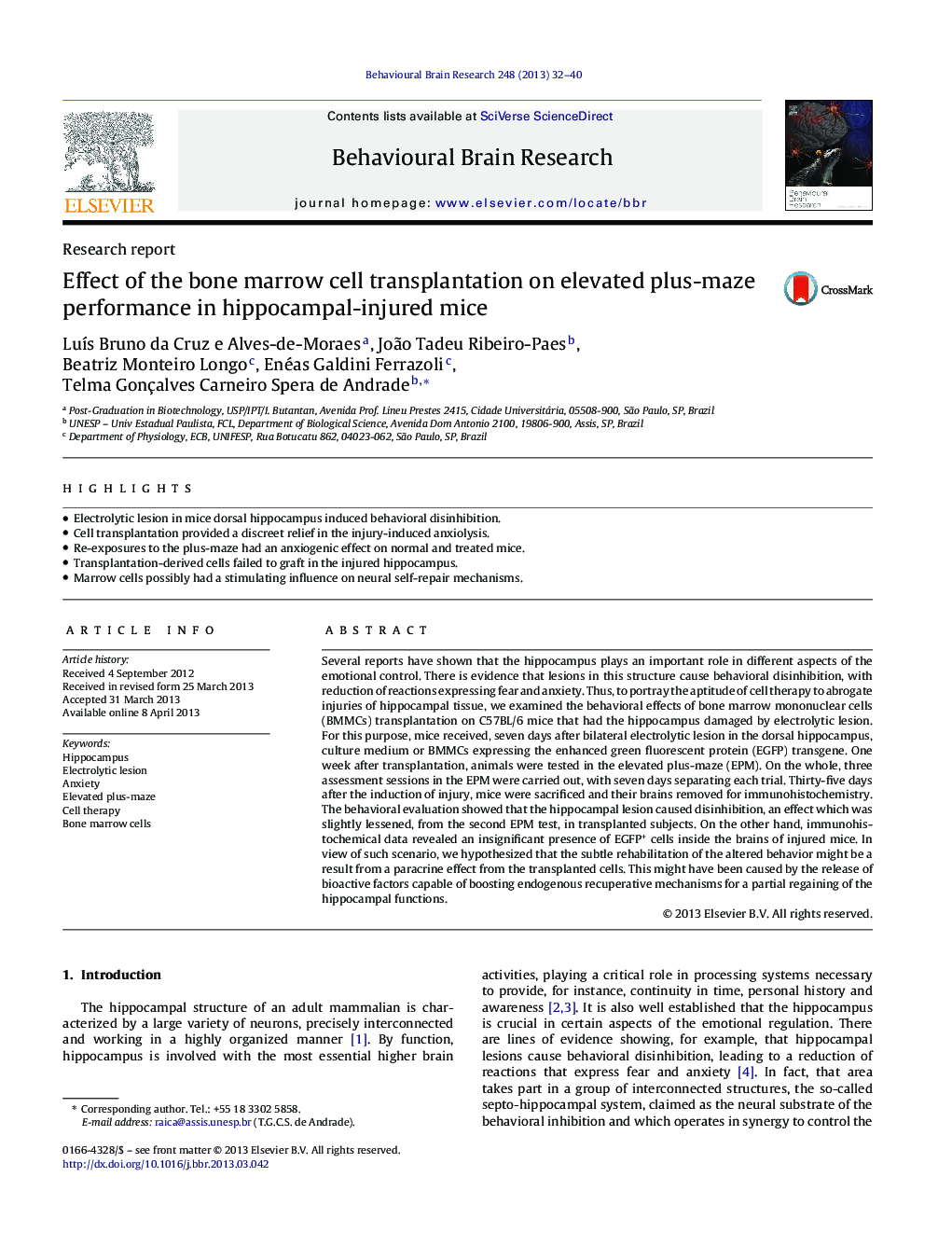| کد مقاله | کد نشریه | سال انتشار | مقاله انگلیسی | نسخه تمام متن |
|---|---|---|---|---|
| 6259130 | 1612984 | 2013 | 9 صفحه PDF | دانلود رایگان |
- Electrolytic lesion in mice dorsal hippocampus induced behavioral disinhibition.
- Cell transplantation provided a discreet relief in the injury-induced anxiolysis.
- Re-exposures to the plus-maze had an anxiogenic effect on normal and treated mice.
- Transplantation-derived cells failed to graft in the injured hippocampus.
- Marrow cells possibly had a stimulating influence on neural self-repair mechanisms.
Several reports have shown that the hippocampus plays an important role in different aspects of the emotional control. There is evidence that lesions in this structure cause behavioral disinhibition, with reduction of reactions expressing fear and anxiety. Thus, to portray the aptitude of cell therapy to abrogate injuries of hippocampal tissue, we examined the behavioral effects of bone marrow mononuclear cells (BMMCs) transplantation on C57BL/6 mice that had the hippocampus damaged by electrolytic lesion. For this purpose, mice received, seven days after bilateral electrolytic lesion in the dorsal hippocampus, culture medium or BMMCs expressing the enhanced green fluorescent protein (EGFP) transgene. One week after transplantation, animals were tested in the elevated plus-maze (EPM). On the whole, three assessment sessions in the EPM were carried out, with seven days separating each trial. Thirty-five days after the induction of injury, mice were sacrificed and their brains removed for immunohistochemistry. The behavioral evaluation showed that the hippocampal lesion caused disinhibition, an effect which was slightly lessened, from the second EPM test, in transplanted subjects. On the other hand, immunohistochemical data revealed an insignificant presence of EGFP+ cells inside the brains of injured mice. In view of such scenario, we hypothesized that the subtle rehabilitation of the altered behavior might be a result from a paracrine effect from the transplanted cells. This might have been caused by the release of bioactive factors capable of boosting endogenous recuperative mechanisms for a partial regaining of the hippocampal functions.
Journal: Behavioural Brain Research - Volume 248, 1 July 2013, Pages 32-40
